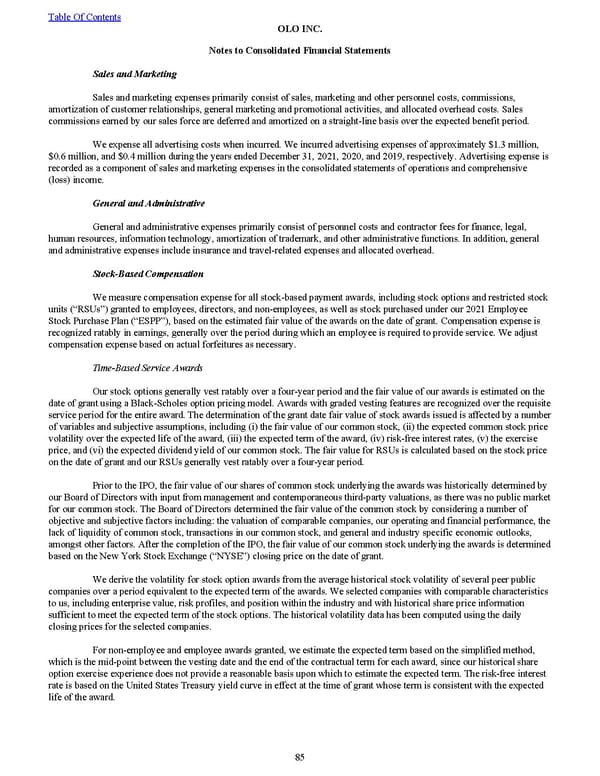Sales and Marketing Sales and marketing expenses primarily consist of sales, marketing and other personnel costs, commissions, amortization of customer relationships, general marketing and promotional activities, and allocated overhead costs. Sales commissions earned by our sales force are deferred and amortized on a straight-line basis over the expected benefit period. We expense all advertising costs when incurred. We incurred advertising expenses of approximately $1.3 million , $0.6 million , and $0.4 million during the years ended December 31, 2021 , 2020 , and 2019 , respectively. Advertising expense is recorded as a component of sales and marketing expenses in the consolidated statements of operations and comprehensive ( loss ) income. General and Administrative General and administrative expenses primarily consist of personnel costs and contractor fees for finance, legal, human resources, information technology, amortization of trademark, and other administrative functions. In addition, general and administrative expenses include insurance and travel-related expenses and allocated overhead. Stock-Based Compensation We measure compensation expense for all stock-based payment awards, including stock options and restricted stock units (“RSUs”) granted to employees, directors, and non-employees, as well as stock purchased under our 2021 Employee Stock Purchase Plan (“ESPP”) , based on the estimated fair value of the awards on the date of grant. Compensation expense is recognized ratably in earnings, generally over the period during which an employee is required to provide service . We adjust compensation expense based on actual forfeitures as necessary. Time-Based Service Awards Our stock options generally vest ratably over a four -year period and the fair value of our awards is estimated on the date of grant using a Black-Scholes option pricing model. Awards with graded vesting features are recognized over the requisite service period for the entire award. The determination of the grant date fair value of stock awards issued is affected by a number of variables and subjective assumptions, including (i) the fair value of our common stock, (ii) the expected common stock price volatility over the expected life of the award, (iii) the expected term of the award, (iv) risk-free interest rates, (v) the exercise price, and (vi) the expected dividend yield of our common stock. The fair value for RSUs is calculated based on the stock price on the date of gran t and our RSUs generally vest ratably over a four -year period. Prior to the IPO, the fair value of our shares of common stock underlying the awards was historically determined by our Board of Directors with input from management and contemporaneous third-party valuations, as there was no public market for our common stock. The Board of Directors determined the fair value of the common stock by considering a number of objective and subjective factors including: the valuation of comparable companies, our operating and financial performance, the lack of liquidity of common stock, transactions in our common stock, and general and industry specific economic outlooks, amongst other factors. After the completion of the IPO, the fair value of our common stock underlying the awards is determined based on the New York Stock Exchange (“NYSE”) closing price on the date of grant. We derive the volatility for stock option awards from the average historical stock volatility of several peer public companies over a period equivalent to the expected term of the awards. We selected companies with comparable characteristics to us, including enterprise value, risk profiles, and position within the industry and with historical share price information sufficient to meet the expected term of the stock options. The historical volatility data has been computed using the daily closing prices for the selected companies. For non-employee and employee awards granted, we estimate the expected term based on the simplified method, which is the mid-point between the vesting date and the end of the contractual term for each award, since our historical share option exercise experience does not provide a reasonable basis upon which to estimate the expected term. The risk-free interest rate is based on the United States Treasury yield curve in effect at the time of grant whose term is consistent with the expected life of the award. Table Of Contents OLO INC. Notes to Consolidated Financial Statements 85
 2022 10K Page 91 Page 93
2022 10K Page 91 Page 93